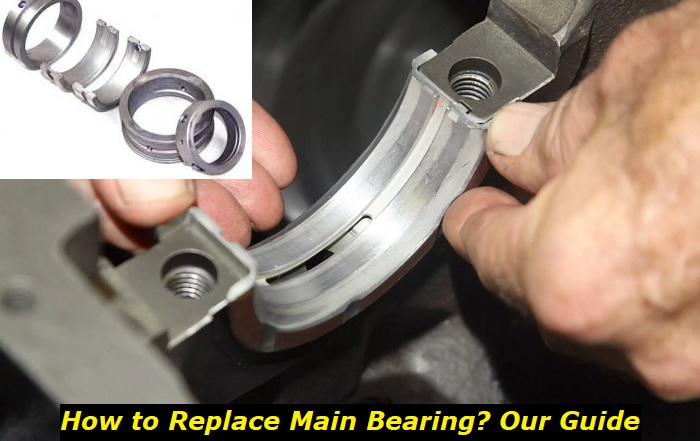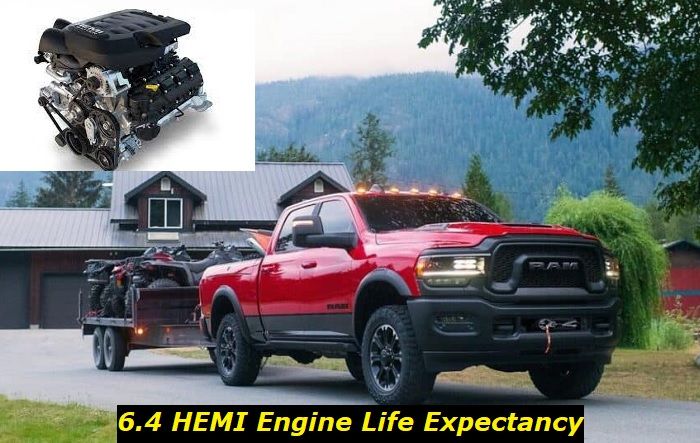The internal combustion of modern piston engines is made possible by a wide array of components and processes. Main bearings are some of the elements of modern petrol and diesel engines that must be in good working condition for the engine to operate optimally. The engine will malfunction and can even get damaged entirely when maintenance of the main bearings is neglected.
Engine repair mistakes highlights
- Level of importance:extremely important
- When done:DIY repairs or diagnostics
- Cost of mistake:$250 - $4,000
- How to avoid:professional inspections, getting help from mechanics
- Consequences:broken engine, need for engine replacement
- DIY solutions:not many

What are the main bearings?
Main bearings are found in piston engines and are responsible for holding the crankshaft in place. The bearings work in such a way that the crankshaft is held in place but can also rotate within the engine. They sit on crankshaft journals. Bearing caps are used to help the bearings stay in place inside the engine block.
The piston engine is equipped with main bearings whose number varies based on the load capacity and the maximum engine speed. Many of the engines in the market have two main bearings on each end of the crankshaft. Some engines have a bearing at every crank pin, which can go as high as six. Some single cylinders are armed with a single main bearing designed to withstand the bending moment.
The main bearing must be in the proper working condition for the effective performance of the following roles;
- The bearing supports engine parts, mainly the crankshaft and elements
- It helps reduce friction in the engine
- Thrust loads
Replacing the main bearings without removing the crank
When rebuilding an engine, numerous components are replaced, including the main bearings. This process usually entails the total removal of the engine from the vehicle and the complete disassembly of the engine. The removal of the engine is necessary to help you check the crankshaft's alignment and that of the engine block.
There are engines whose main bearings can be replaced while the engine is still in the vehicle. Such engines don't require removal for you to replace or work on the main bearings. But it is essential to know that such a venture requires specific skills and a number of considerations.
Steps to follow to replace the main bearings
- Start by raising the vehicle and securing it with jack stands. Drain all the oil from the oil pan and continue by removing the oil pan using a ratchet and socket.
- Remove the spark plugs to relieve the engine compression. Where the head cylinder has been removed, there is no need to remove the spark plugs.
- Loosen and remove the bearing caps and then lower half of the bearing. The main bearing can be secured to the block using bearing bolts instead of bearing caps. Using a plastic hammer, carefully tap on the bearing cap on the side. Make sure you mark the bearing cap and the corresponding bearing journal. Remove all the bearing caps by following this procedure. For stubborn caps, use cap screws as a lever.
- This step requires care because you can make the bearing jam. Insert the removing tool into the journal oil hole, rotate the crankshaft, and the bearing shell will rotate together with the journal. This procedure exposes the upper half of the bearing for better access. The main bearing's lock will raise out of the notch and above the block by rotating the crankshaft. Turning the crankshaft in the wrong direction will further jam the bearing into the notch. Bear in mind that if the bearing is dowelled into place, then the crankshaft will have to be removed.
- Before removing the bearing, check for visible wear on the components to help you determine the right parts to replace. A crankshaft journal micrometer should be used to measure the journal's diameter, which is done by rotating the crank. If the journals are worn beyond the recommended measurements, remove the crank and repair it.
- At this stage, you have the correct crankshaft and new main bearings. Before installing the bearings, ensure that the journal surface and the bearings are free of dirt. This is to help avoid premature wear. You should then coat the bearing and the journal surfaces with engine oil.
- Installing the first half bearing requires you to use the removal tool as before and turn the crankshaft in the opposite direction from the one used when removing it. The bearing should slip in with ease, and if forced, it can become distorted. Another thing to note is that the edges of the bearings should never be filed, as they will perfectly fit when the bearing caps or bolts are tightened.
- Once done fitting the first half bearing, place the other half in the cap and fix the cap. You should then tighten the bolts to get the proper crush. Check the clearance with a plastigage. Like before, loosen the bolts by one-half turn before proceeding to the next bearing.
- The final step requires torquing the bearing caps to the recommended specifications. Reinstall the oil pan, and make sure you use a new gasket. Add engine oil and start the vehicle. Check for any oil leaks and noises to confirm the replacement procedure has gone accordingly.
Factors to consider when replacing main bearings
- You will get the best results when replacing main bearings if you are aware of the following factors;
- You must have a micrometer which will help you take measurements of the roundness, size, and taper of the crankshaft. The crankshaft must be in the right condition when replacing the bearings to avoid redoing the same job every other day.
- Use a one-cent coin to check the surface finish of the crankshaft. Rub the cent several times on the surface of the crankshaft, and if the surface picks copper from the coin, then the crankshaft is rough and requires reconditioning.
- Each bearing corresponds to a specific journal, so it is critical to mark every bearing and its corresponding journal. In addition, ensure that there is nothing between the bearing and the bore surface.
- Checking surface clearance is another critical thing to check when replacing bearings. Using a feeler gauge, check the clearance between the bearing flange surface and the crankshaft thrust disc.
- To avoid a dry start of the engine and any premature damage to the main bearing surface, priming the engine is essential.
To get the right torque readings:
- Ensure that threads are lightly oiled.
- Never guess when torque tightening.
- Always use the proper torque specifications for your engine.
How can you know if the main bearings are bad?
Not every day a vehicle or a machine suffers from bad main bearings. But when this does happen, you should be able to pick the symptoms;
- Knocking sound or noise - When you hear some knocking noise whenever you start your car, the main bearings could be the culprit.
- Low oil pressure - When main bearings begin to fail, you may notice a decrease in oil pressure. This can be seen especially when you first start the vehicle. Check engine light will appear on the dash. However, it may disappear soon after starting the engine, depending on the severity of the damage.
What causes main bearing damage?
- Oil starvation - One of the leading causes of bearing damage is the lack of sufficient oil in the engine. To correct this, you regularly check engine oil and check for clogged oil passages if you suspect an issue with the oil system.
- Damaged journal surface - When replacing the main bearings, ensure the journal surface is of the correct measurements and smoothness.
- Low viscosity of oil - This problem is usually caused when oil gets diluted with fuel or coolant. To correct this problem, use higher viscosity oil or address the contamination issue.
- Bad connecting rod - An out-of-shape connecting rod causes a misalignment problem where other piston components suffer. You should correct this problem by properly machining or replacing the entire rod.
- Bearing material fatigue - This problem typically happens due to aluminum lining fatigue. The issue then escalates to a point where the fatigue cracks on the surface, reaching the steel surface. Over time, the steel shavings find their way into the system leading to engine failure. To solve the problem, use tri-metal or bi-metal bearings.
Conclusion
The main bearing replacement is a challenging procedure. It requires you to have the right skills besides having the right tools with you. Vehicles like the Toyota Camry allow you to replace the main bearings without removing the crankshaft. Besides following the above-highlighted procedure, you should also be aware of what caused the problem in the first place. This is to help you avoid patching up the engine without solving the underlying issues. This procedure requires that you be sure there are no other engine issues that can make your work redundant and costly.
About the authors
The CarAraC research team is composed of seasoned auto mechanics and automotive industry professionals, including individuals with advanced degrees and certifications in their field. Our team members boast prestigious credentials, reflecting their extensive knowledge and skills. These qualifications include: IMI: Institute of the Motor Industry, ASE-Certified Master Automobile Technicians; Coventry University, Graduate of MA in Automotive Journalism; Politecnico di Torino, Italy, MS Automotive Engineering; Ss. Cyril and Methodius University in Skopje, Mechanical University in Skopje; TOC Automotive College; DHA Suffa University, Department of Mechanical Engineering






Add comment